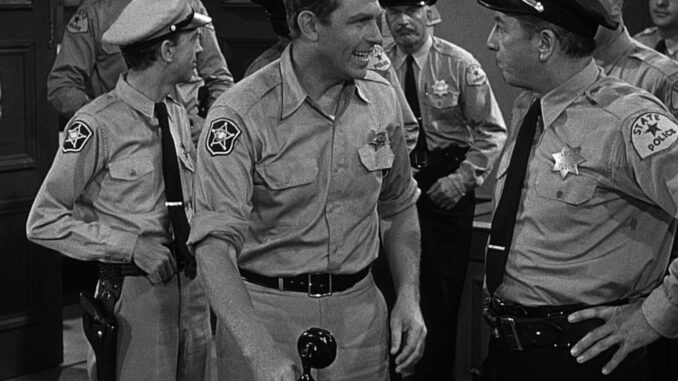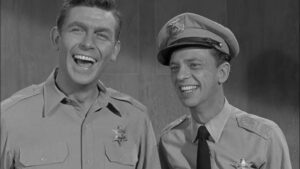
When you think of classic television, The Andy Griffith Show likely springs to mind—a beloved series that captured the hearts of millions with its quaint charm and relatable characters. But what lies beneath the surface of this seemingly idyllic world of Mayberry? Recently, Ron Howard, who portrayed the iconic Opie Taylor, offered insights that shed light on the vibrant environment behind the scenes, despite whispers of Andy Griffith’s notorious temper. Let’s dive into this intriguing dichotomy of joy and rumored frustrations.
The Heartbeat of Mayberry
1. A Snapshot of Mayberry
Mayberry is more than just a fictional town; it’s a microcosm of small-town America, complete with its quirks, warmth, and sense of community. The show, which aired from 1960 to 1968, showcased a simpler way of life, one that resonated with viewers and provided an escape from the complexities of the outside world.
2. Andy Griffith: The Man Behind the Sheriff’s Badge
Andy Griffith, who played the beloved sheriff, was known not just for his acting prowess but also for the intensity he brought to his role. While some cast members described him as having a temper, Ron Howard emphasizes the balance that existed. The underlying joy within the cast created an atmosphere that made filming a delightful experience.
A Journey Through Memory Lane

3. Behind the Scenes: Joyful Moments on Set
Ron Howard reminisces about the camaraderie among the cast and crew, which often led to spontaneous laughter and joy. He recalls how these moments contributed to the overall spirit of the show. Despite any rumored frustrations from Griffith, the genuine connections formed on set overshadowed any negativity.
4. The Role of Laughter in Filming
Laughter was a crucial element in the filming of The Andy Griffith Show. Howard notes that many scenes were filled with playful improvisation, leading to moments that weren’t just scripted but felt authentically joyful. These lighthearted interactions enriched the series, making it more than just a television show; it became a cherished family experience.
The Duality of Andy Griffith
5. Understanding Griffith’s Complexity
Andy Griffith was a multifaceted individual. While he was dedicated to his craft, the pressure of leading a successful show may have contributed to his intensity. Howard’s reflections reveal that Griffith’s drive for excellence often resulted in high expectations, which might have been perceived as temperamental.
6. The Balance of Professionalism and Joy
Despite any rumored tempers, Howard emphasizes the balance of professionalism and joy that Griffith embodied. The environment on set was filled with mutual respect, where everyone worked tirelessly to deliver quality entertainment. This harmony among the cast allowed them to navigate the pressures of production while fostering a joyful atmosphere.
Lessons from Mayberry

7. The Importance of Community
One of the most significant themes in The Andy Griffith Show is the importance of community. The friendships and support displayed among the characters reflect a deep-seated value that resonates with audiences today. This sense of belonging translated to the actual cast, reinforcing their bond and commitment to creating joyful storytelling.
8. Finding Joy in the Journey
Howard’s insights serve as a reminder that joy can often be found amidst challenges. The production team and cast faced numerous hurdles, yet their ability to uplift each other forged a strong foundation for success. This philosophy resonates with anyone pursuing their dreams, illustrating the importance of positivity in the face of adversity.
The Legacy of Joy in Mayberry
9. The Enduring Appeal of the Show
Even decades after its original run, The Andy Griffith Show remains a beloved classic. Its timeless themes of friendship, kindness, and community continue to resonate, proving that joy is a universal language that transcends generations.
10. Griffith’s Lasting Impact on Television
Griffith’s portrayal of Andy Taylor set a standard for future television characters, blending authority with compassion. His complex persona, coupled with the show’s underlying joy, created a legacy that many contemporary series still aspire to replicate.
Reflections from Ron Howard
11. Growing Up in the Spotlight
Howard’s unique perspective as a child actor lends insight into the dynamics on set. Growing up amidst the laughter and camaraderie, he reflects on how those experiences shaped his view of the entertainment industry, reinforcing the idea that joy can coexist with professionalism.
12. Carrying the Joy Forward
As Howard continues his career, he often reflects on the lessons learned during his time on The Andy Griffith Show. The joy experienced on set has influenced his approach to storytelling, reminding him to prioritize happiness and authenticity in his work.
The Myth of the Temperamental Star
13. Breaking Down Stereotypes
The stereotype of the temperamental star is common in Hollywood, but Howard encourages viewers to look beyond the surface. By sharing his experiences, he highlights the nuances of Griffith’s character and the joy that permeated the show, challenging the notion that a temper must define a person’s legacy.
14. The Power of Perspective
Understanding Griffith’s complexity encourages a broader perspective on celebrity culture. Howard’s reflections serve as a reminder that everyone has their struggles, and what matters is how we navigate those challenges while maintaining joy and connection with others.
Conclusion: The Joy of Mayberry Endures
In the end, The Andy Griffith Show stands as a testament to the power of joy in storytelling. Ron Howard’s insights reveal that despite any rumored tempers, the heart of Mayberry beats strong with warmth and camaraderie. This enduring legacy continues to inspire audiences, reminding us that joy can thrive even in the most unexpected places.
